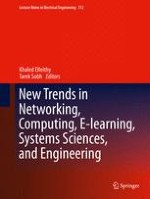2015 | OriginalPaper | Buchkapitel
A Critical Review on World University Ranking in Terms of Top Four Ranking Systems
verfasst von : Farzana Anowar, Mustakim A. Helal, Saida Afroj, Sumaiya Sultana, Farhana Sarker, Khondaker A. Mamun
Erschienen in: New Trends in Networking, Computing, E-learning, Systems Sciences, and Engineering
Aktivieren Sie unsere intelligente Suche, um passende Fachinhalte oder Patente zu finden.
Wählen Sie Textabschnitte aus um mit Künstlicher Intelligenz passenden Patente zu finden. powered by
Markieren Sie Textabschnitte, um KI-gestützt weitere passende Inhalte zu finden. powered by
